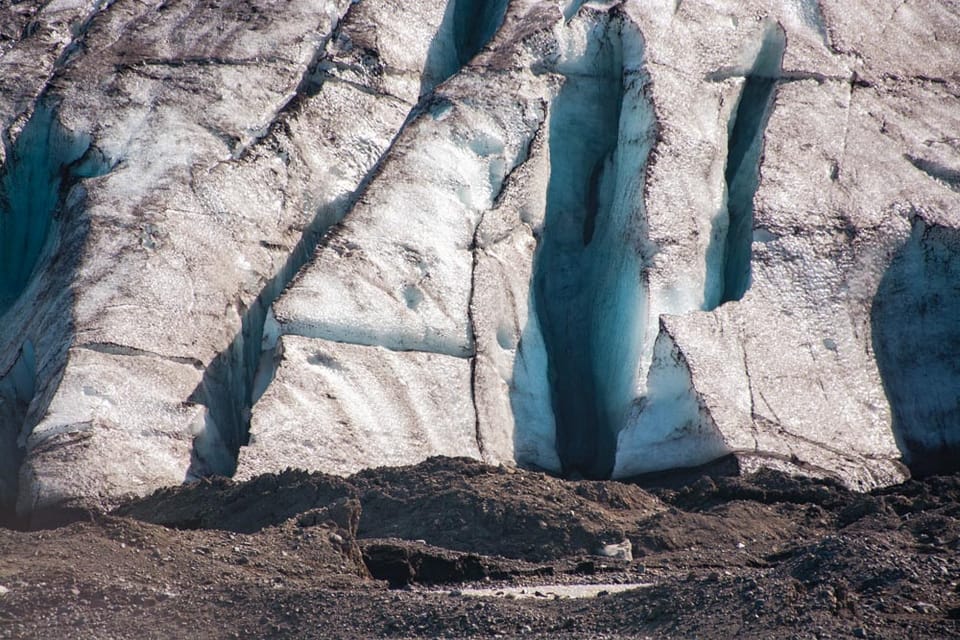
From White Dreams to 50 Shades of Grey: A Journey Around Vatnajökull

Iceland’s Vatnajökull glacier defied all our preconceptions. We arrived expecting to see vast, sparkling white crevasses, clean, icy sculptures glowing under the Icelandic sun.
What we found was something else entirely. At noon, under the high sun, the glacier shimmered a brilliant white from a distance. But as the sun dipped and we came closer, that brilliance faded. The ice turned grey, then black. The edges were not smooth or clean, but jagged with massive moraines. The edges towering piles of stones, dust, and sand, collected as the glacier slowly dragged its body down through the valleys.
The Grit Behind the Glacier
We circled Vatnajökull from the south first. From afar, its ice tongues looked like rivers of snow, sliding slowly into the valleys. Standing near one, we watched giant blocks of ice crack off into the lake below. The deep, echoing, sharp sound they made was like nothing we had heard before. It was raw, powerful, unforgettable.
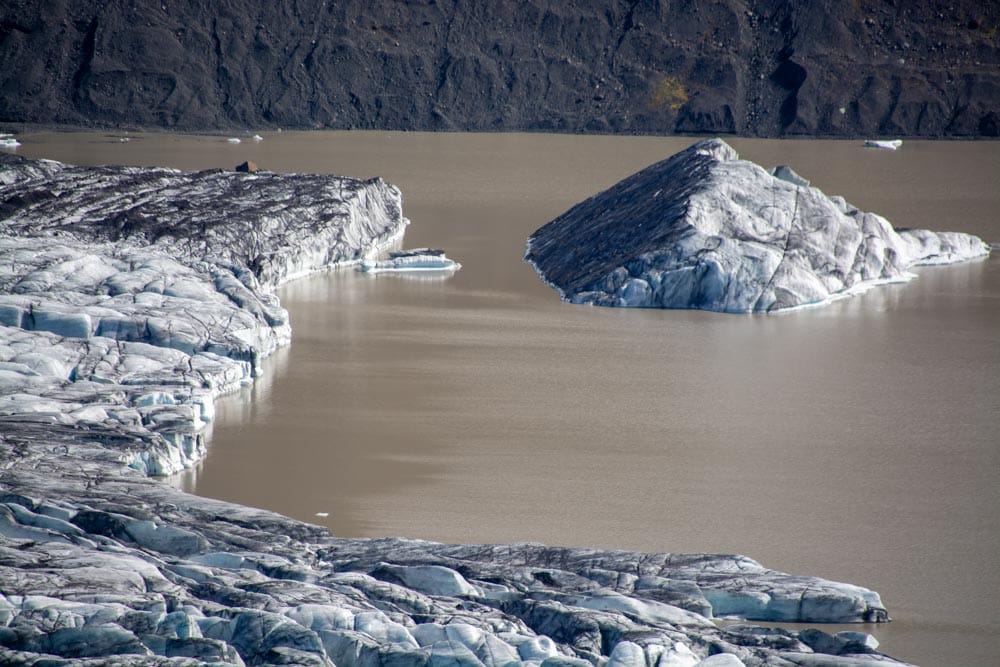
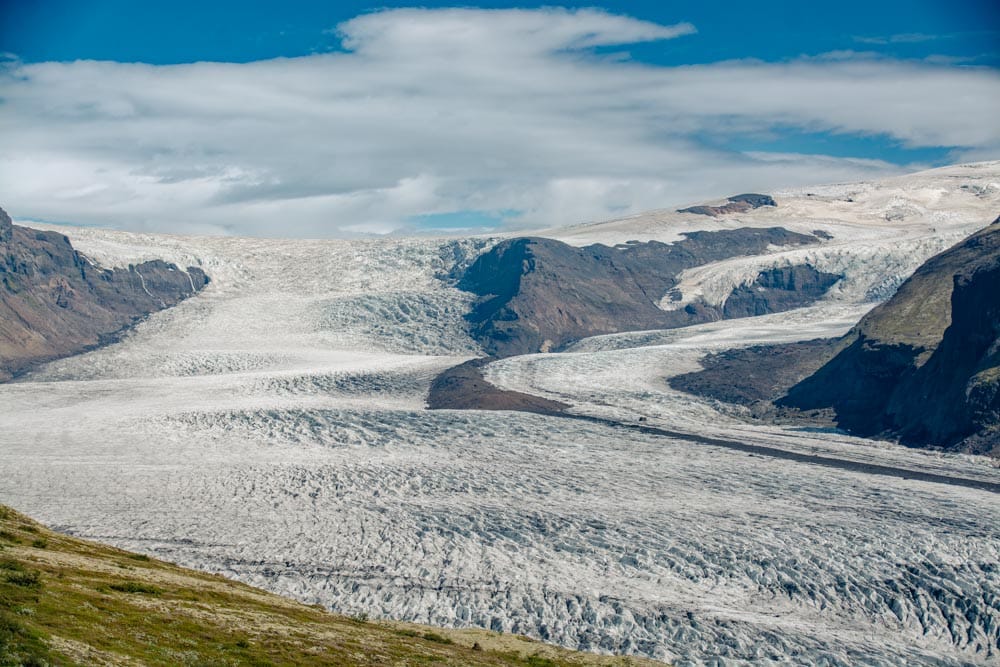
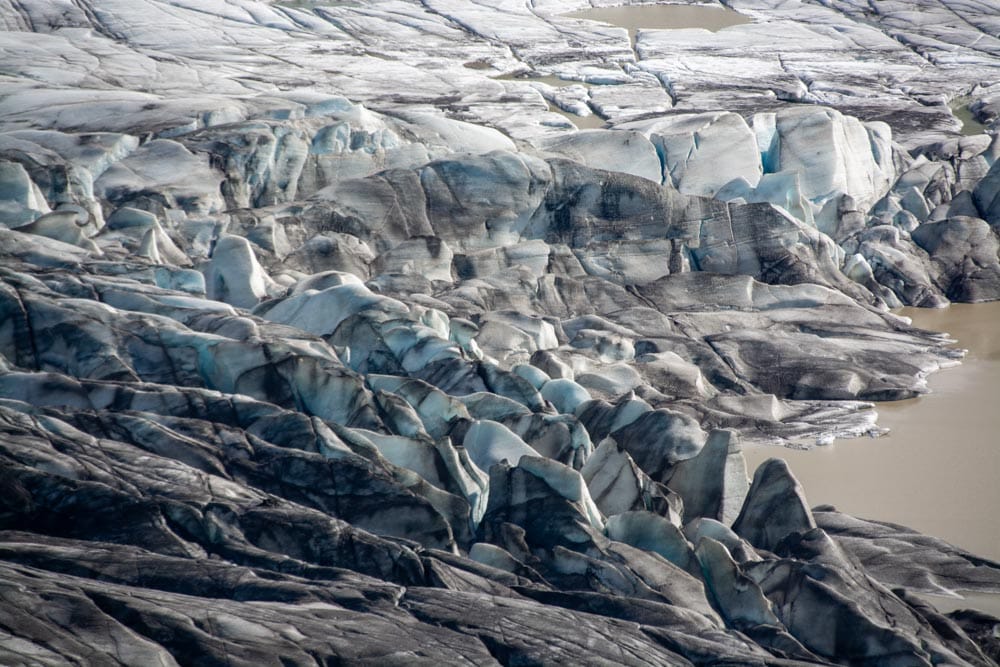
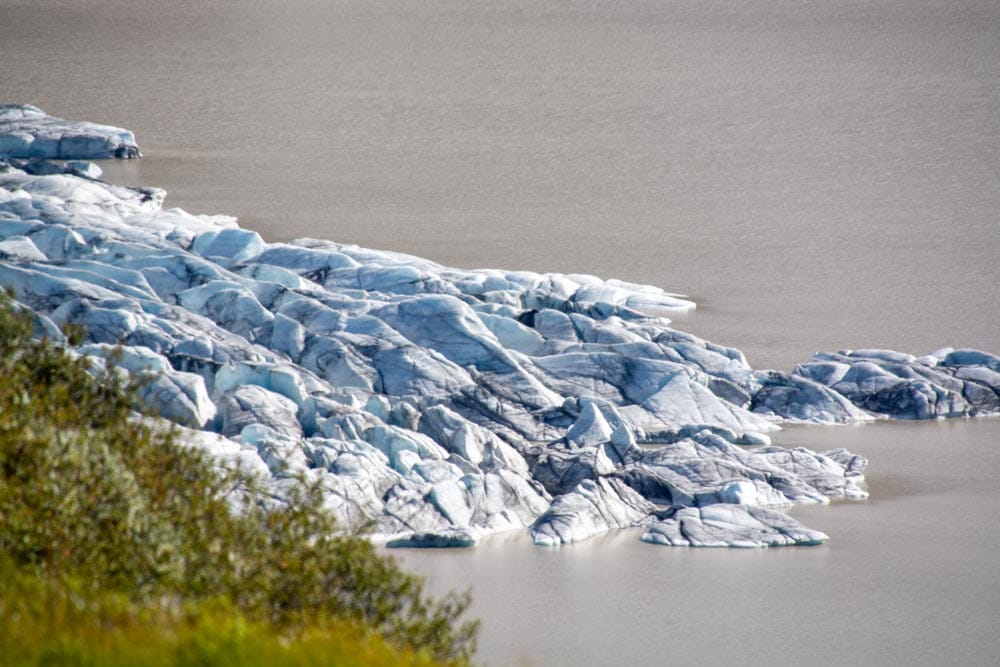
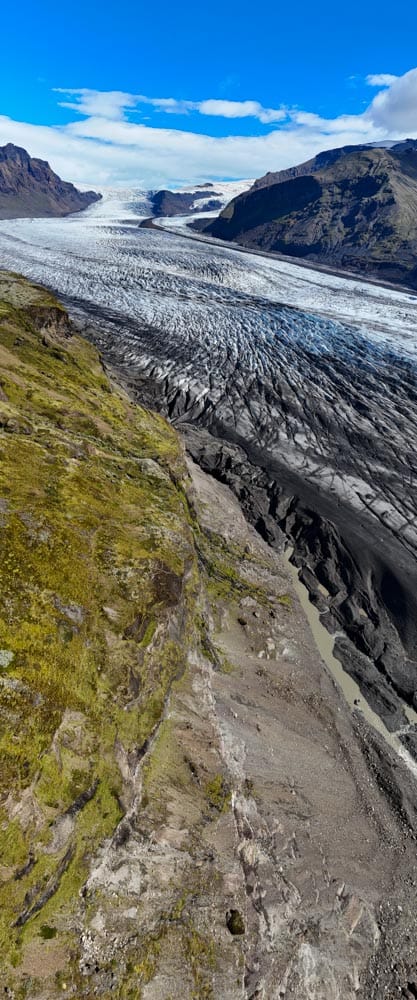
Glacier Tounges crawl down into the Valley and dissolve into big Glacier Lakes.
When the snow melts, the pristine whiteness disappears and what remains is a gritty, heavy mass of debris. It’s astonishing how much of it there is. The leftover sediment forms ridges and hills that resemble small mountains in their own right.
Into the Ice: A Northern Route
Approaching the glacier from the north meant six hours of off-road driving through lunar-like landscapes. We reached a remote campsite tucked into silence just a few kilometers from the ice. From there, we hiked to the glacier’s edge and found a cave formed by a geothermal river melting the underside of the ice. You could go inside. It wasn’t forbidden. But the rangers were blunt. If you go in and something happens, they will not risk a rescue. No rules. Just reality. We decided not to enter, but I sent out the drone and captured some stunning, fragile details.
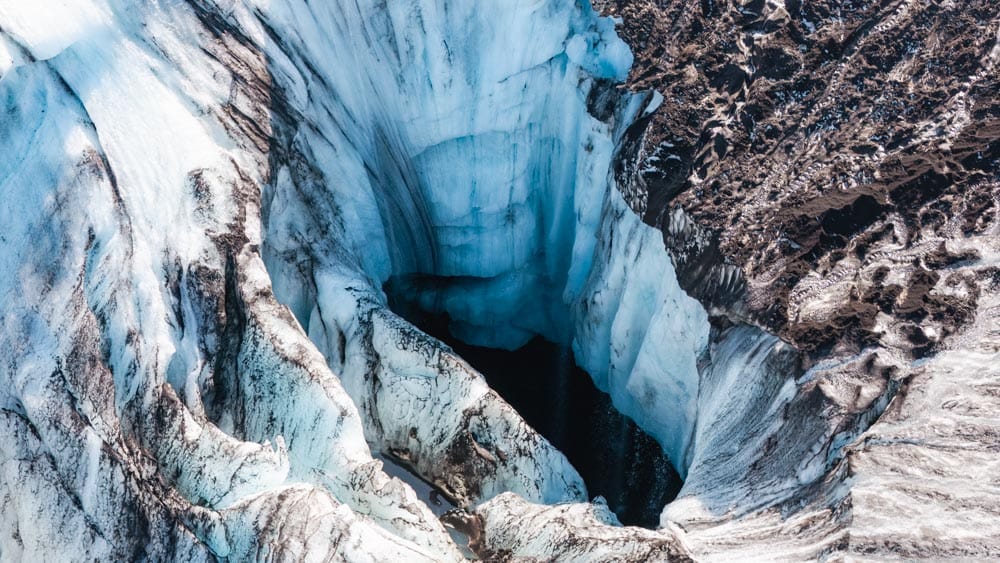
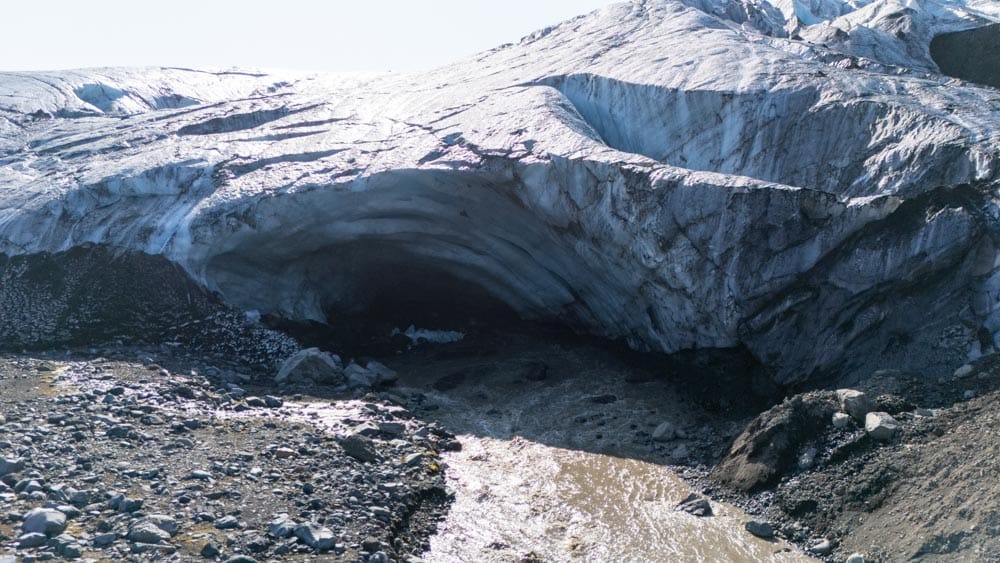
Moraines and the Blue Heart of the Glacier
Another day we hiked around one of the glacier tongues, scrambling up the stone and sand moraines to reach the upper part of the ice. 1100 meters above see level, finally, we saw what we had imagined: blueish, fractured, cold, and utterly inhospitable. Otherworldly. Stark. Beautiful.
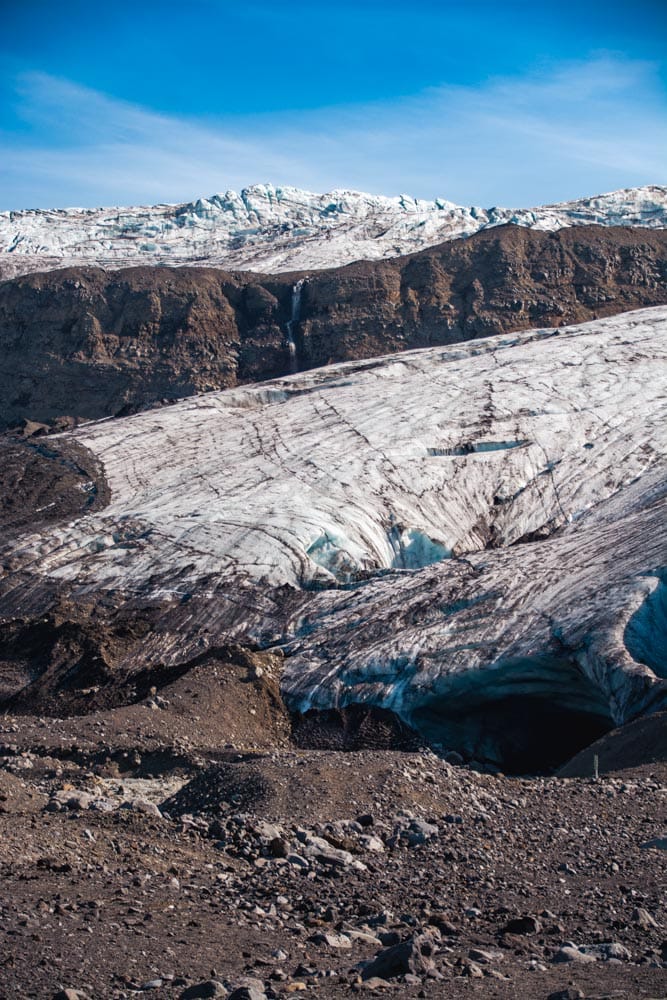
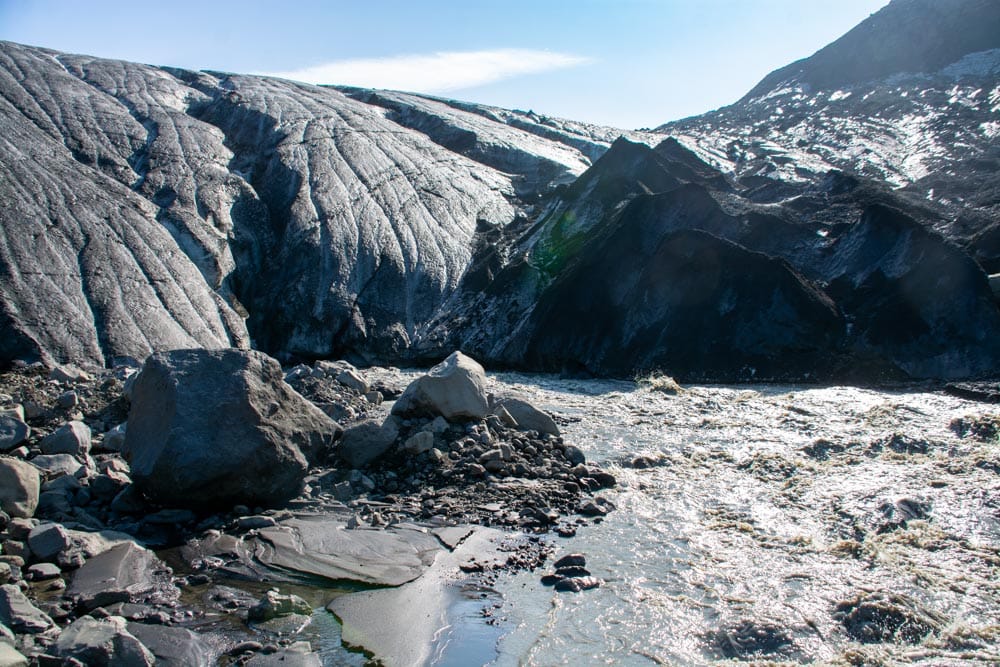
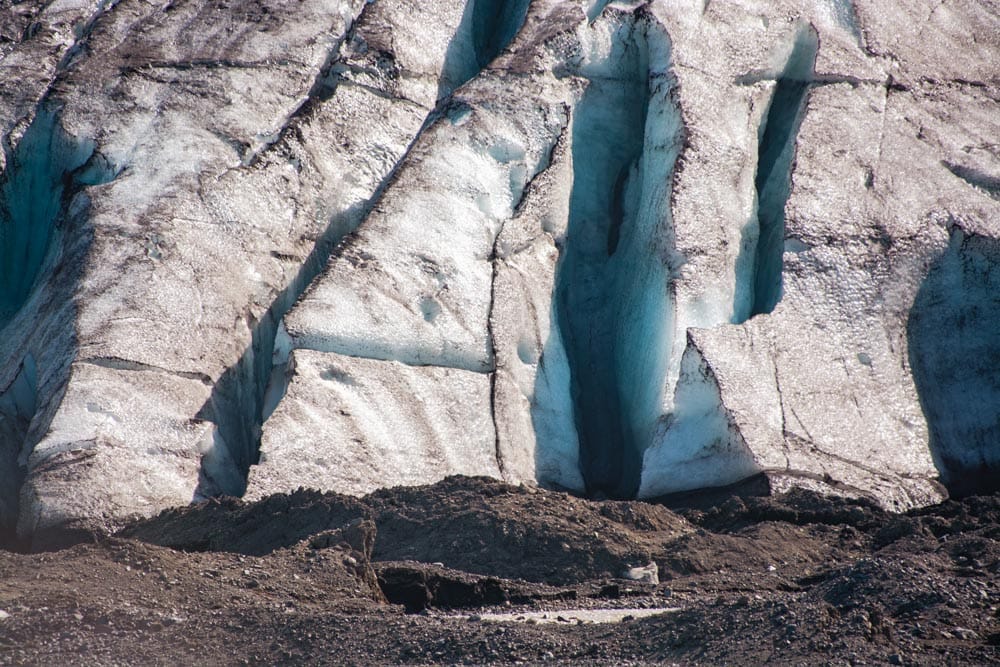
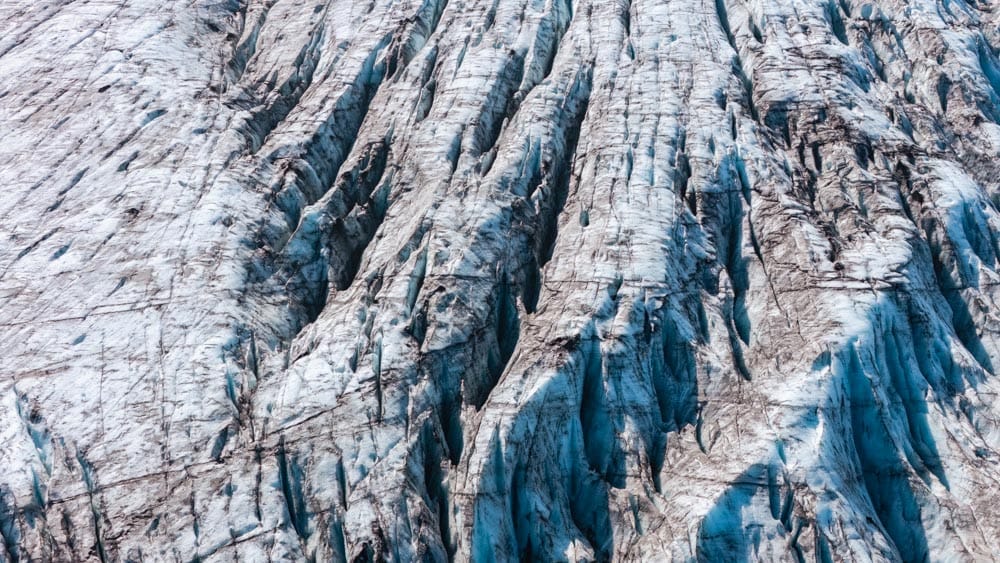
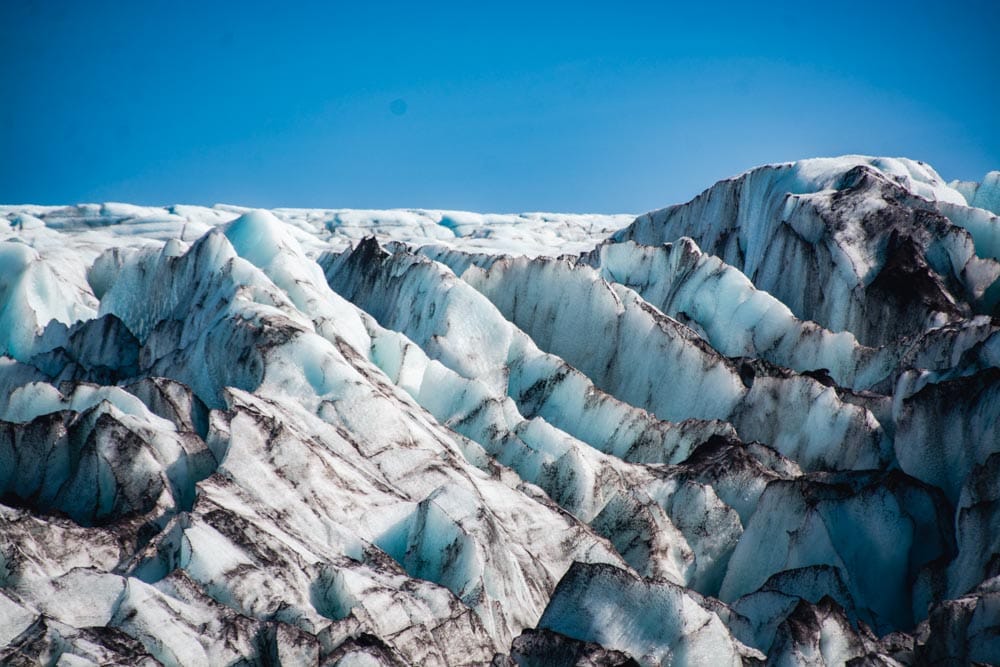
Time Stamped Retreat
Everywhere we went, small signs stuck into the ground marked the glacier’s position over the years. Each August, rangers record the edge’s retreat. Standing next to those markers was devastating. In just a few years, the ice has drawn back by dozens of meters. It’s a slow fade, year by year.
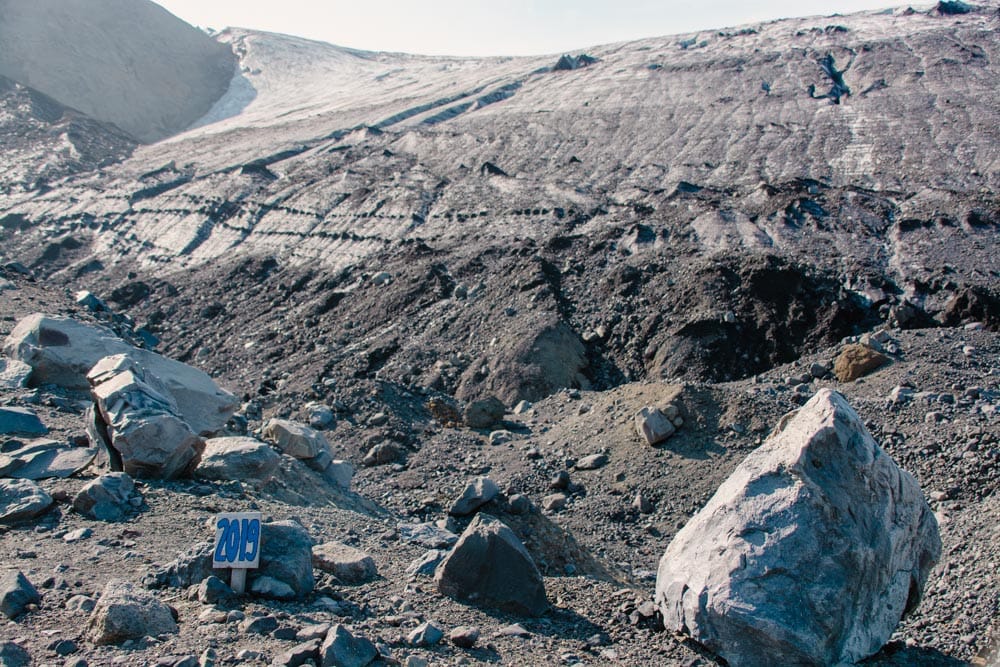
When you stand there, the glacier stretches from left to right as far as your eyes can see.
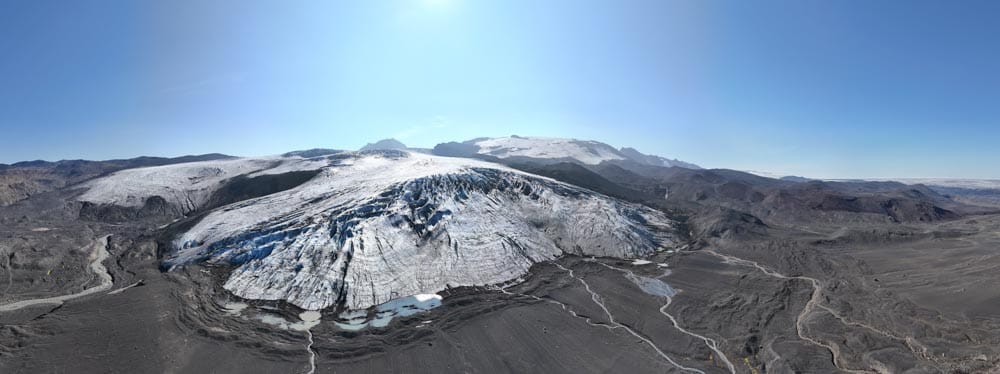
But look at the map, and you realize what you see in this panorama is just a fraction, less than two percent, of what still remains.
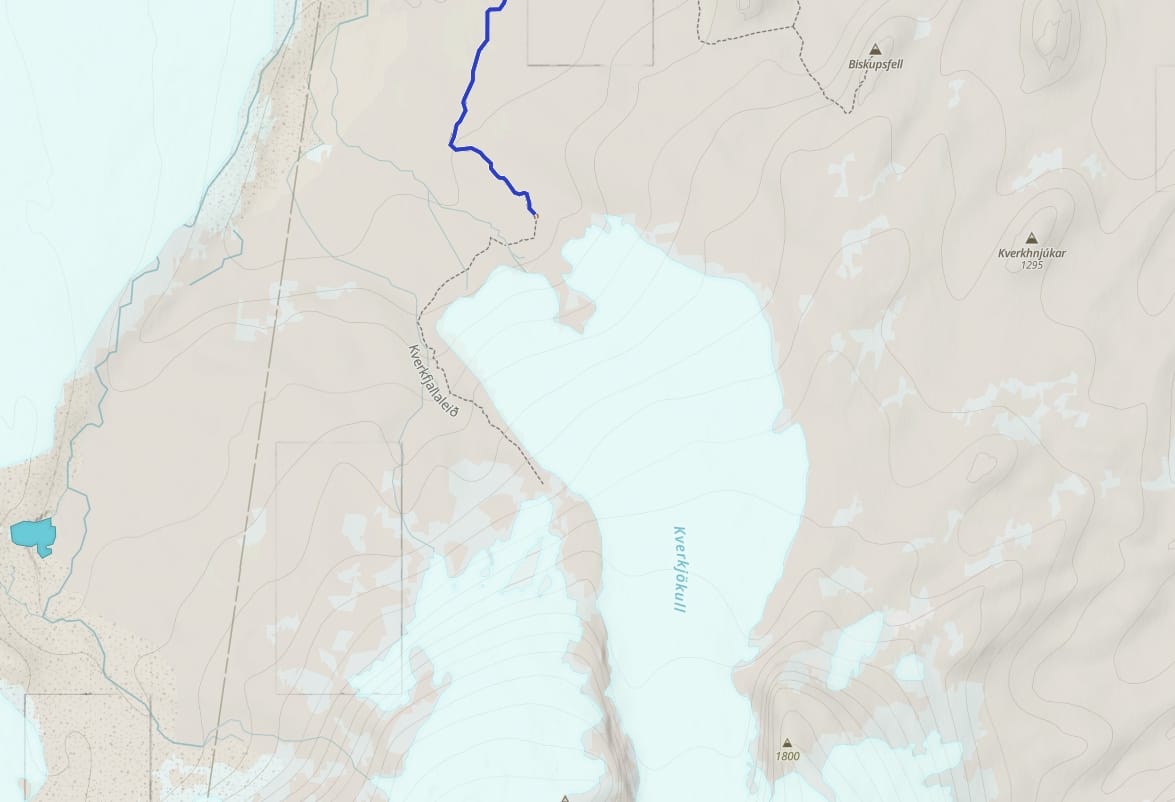
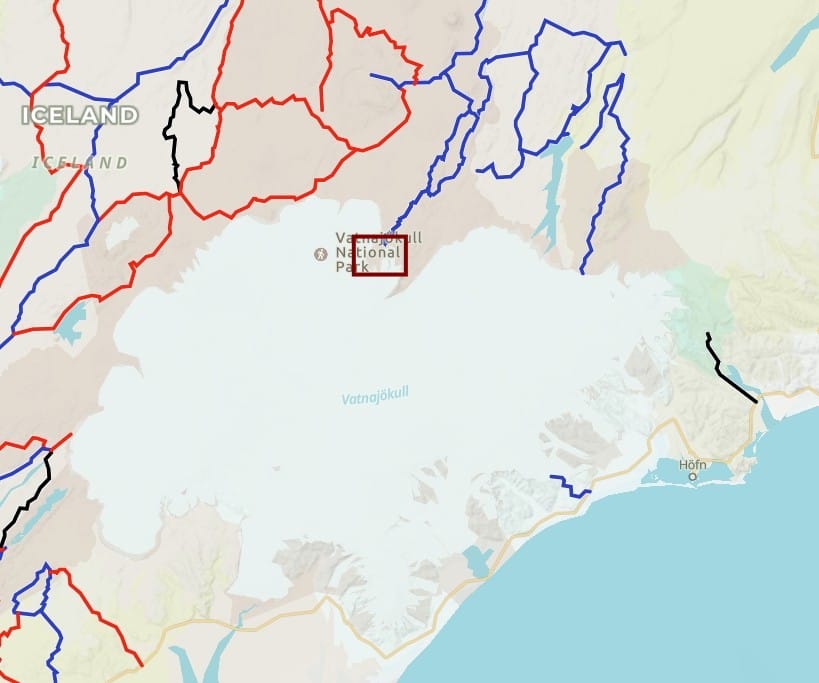
Left: The blue trail marks the place where the above Panorama is taken. Right: The red Square shows the area the left Map represents.
A Glacier’s Legacy
Vatnajökull covers around 7,700 square kilometers, making it Europe’s largest glacier by volume. The national park that protects it spans nearly 15,000 square kilometers, which is over 14 percent of Iceland’s landmass. That’s about six times the size of the German state of Saarland. Beneath the ice, active volcanoes like Grímsvötn rumble, sometimes causing dramatic glacial floods.
There’s a message in the shrinking edges and the piles of stone.
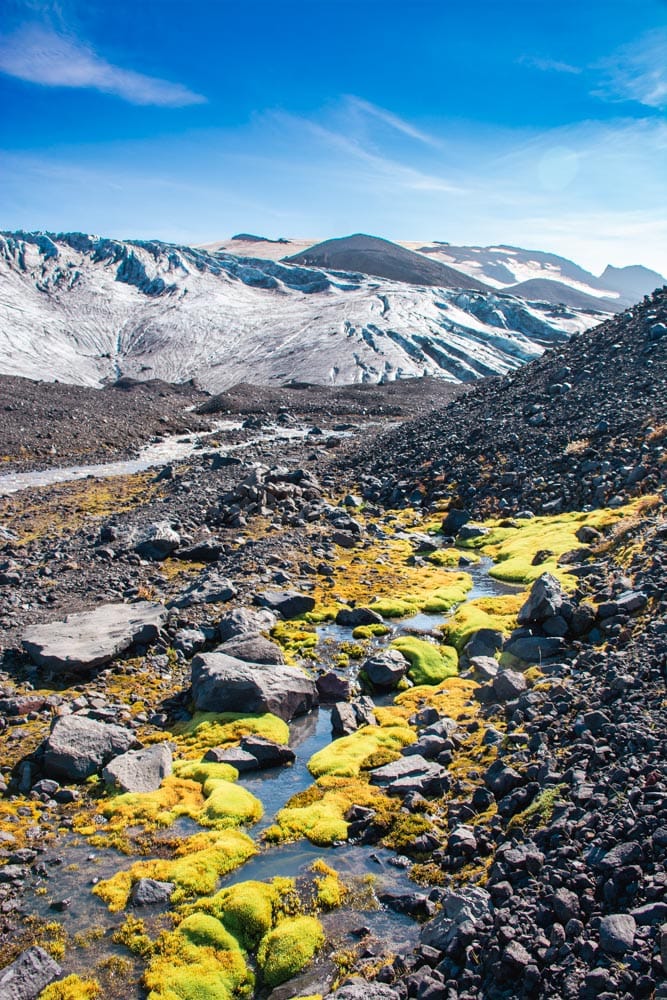
What we imagine is often not what we find.
And that’s exactly why we travel.
You don’t need to travel to Vatnajökull to feel its impact. This place teaches you that nature isn’t always picture-perfect. Sometimes it’s raw, dirty, changing fast. And there’s beauty in that reality.
Explore. Dream. Discover.
